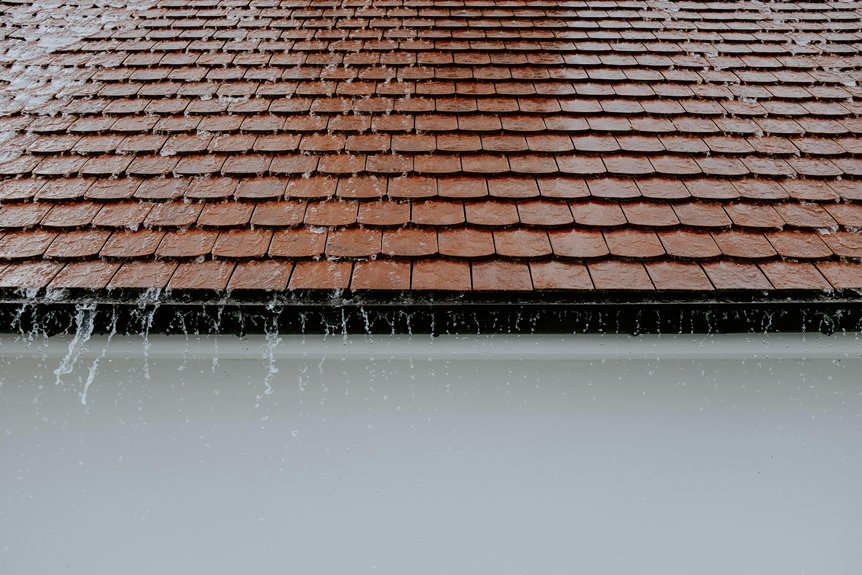As storm season approaches in Blanchard, it’s important to guarantee your roof is ready to handle severe weather. Taking proactive steps now can help prevent costly repairs and protect your home. From inspections to trimming trees, there are key tasks to complete before the first storm hits. Staying ahead of potential issues means your property will be better prepared for whatever Mother Nature throws your way. Here’s what you need to know.
Pre-Storm Roof Preparation Tips
As storm season approaches in Blanchard, making certain your roof is prepared to withstand heavy winds and rain is essential. One of the most important steps you can take is scheduling a professional roof inspection. A thorough inspection helps identify early signs of damage, including hail damage, that mightn’t be visible from the ground.
Hail can cause significant harm to your roof, weakening shingles, cracking tiles, and compromising your roof’s integrity. Catching these issues early allows you to address them before the storm season intensifies, reducing the risk of costly repairs later.
During your roof inspection, look for signs of hail impact such as dents, bruising, or granule loss on shingles. These signs often indicate hidden damage that could lead to leaks or further deterioration when heavy rain hits. A trained inspector can also check for loose or missing shingles, damaged flashing, and compromised seals around vents and chimneys—all vulnerabilities that storms can exploit. If you notice any damage, schedule repairs promptly to reinforce your roof’s defenses before the weather worsens.
Next, ensure your gutters and downspouts are clear of debris. Clogged gutters can cause water to back up and seep into your home’s structure, especially during heavy rains. Proper drainage is essential to prevent water from pooling on your roof or spilling over the edges, which can lead to leaks or even roof collapse in severe cases.
Make it a habit to clean your gutters regularly, particularly before storm season begins. Check your roof’s overall condition for loose or damaged shingles, tiles, or flashing. Secure any loose materials and replace those that are cracked or missing. Reinforcing vulnerable areas now can prevent wind-driven rain from penetrating your roof’s defenses.
If your roof has experienced previous damage, consider installing impact-resistant shingles or protective barriers to better withstand hail and high winds. Finally, trim any overhanging branches near your roof. Falling limbs during storms can cause immediate damage, puncturing or dislodging shingles. Removing these hazards minimizes the risk of sudden damage during a high-wind event.
Additionally, understanding your region’s weather challenges can help you choose the most resilient roofing materials and techniques, ensuring your home is better protected against the specific threats posed by Blanchard storms.
Conclusion
By following this checklist, you’ll keep your roof in top shape and better prepared for storm season. Regular inspections, clearing gutters, and trimming trees can prevent costly damage and guarantee your home stays safe. Taking proactive steps now means fewer surprises later. Stay vigilant, stay prepared, and enjoy peace of mind knowing your roof is ready to weather any storm that comes your way. Protect your investment and keep your home secure year-round. For more information on how to schedule your free roof inspection, call us at (405) 543-2920 or visit us online at Top View Roofing.











